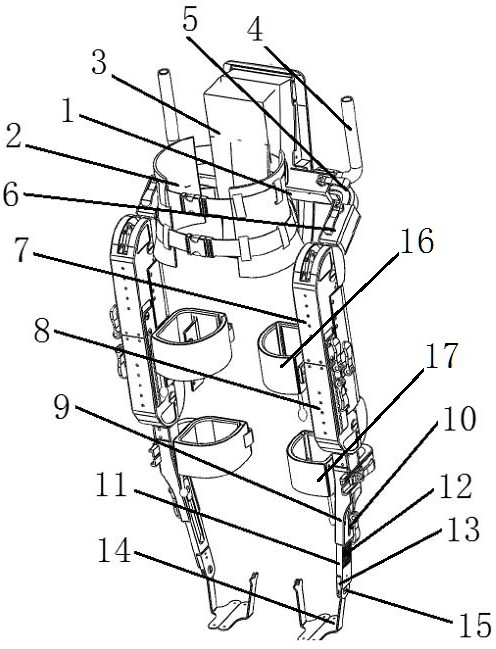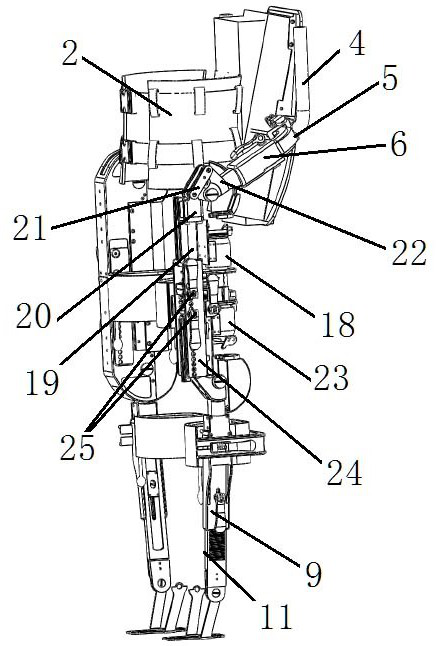This kind of training is carried out through the current wearable lower limb
rehabilitation training system (also called lower limb
exoskeleton robot). Driven by the controller, the overall system is equipped with a battery, and then under the control of the
algorithm set in the controller or partly under the feedback of the sensor
signal, the controller controls the joint movement through the controller to drive the patient to walk and assist the patient in rehabilitation. , this kind of rehabilitation training equipment needs to meet the following requirements: first, safety and stability, the user's
balance ability and exercise adjustment ability are generally not good, safety and stability are the most basic and important requirements for this type of equipment; second It can be worn by different patients. Due to the large differences in the height, fat and thinness, gender, and proportion of various body parts of patients, the cost of manufacturing and using each patient is too high, so it is required that the equipment can be standardized. The third is the battery life of the device. Since the device not only drives the device itself, but also drives the legs of the
human body to move, it needs a certain amount of power, and the configured battery If the capacity is too large, the device will be heavy, and the device will be connected to the patient through the
waistline. The
overweight device will put too much pressure on the patient's back, and the battery will heat up during use, which will bring a lot of discomfort to the patient; the fourth is comfort. , due to the psychological problems caused by the patient's own
disease, if some parts or components bring bad feelings during training, it will make the patient feel irritable and affect the effect of rehabilitation training
Chinese Patent No. 2018108898016 discloses a rehabilitation lower extremity
exoskeleton, claiming that it can realize the function of helping patients walk, but there are many problems in it, which basically cannot meet any of the above requirements. One is the
structural problem of the hip joint. The mechanism is a very important mechanism in the equipment to realize the movement of the thigh, but the weight of the thigh is relatively heavy, and the drive itself requires a large power. In this patent, the
ball screw is used to drive the connecting rod to drive the hip joint, and there are the following problems: First, The driving motor of the
ball screw is arranged "head down". The
ball screw is located at the
waist above the hip joint, but the distance between the
waist and the hip joint is very short, so the moment arm is very short when the linkage mechanism is used to drive the hip joint. This requires the screw to be equipped with a motor with a
higher power, and this method of driving the hip joint is a "lever type" drive. Due to the
heavy weight of the legs, the whole leg is a resistance arm, which is conceivable. The power of the motor will be very large, and its driving force arm will gradually become shorter during the rotation of the hip joint, and the required driving force will also increase. Using a motor with a
higher power will cause a series of problems, such as: a: The power of the motor Both increase the
power consumption of the equipment and shorten the
continuous operation time of the equipment under the condition of a certain
battery capacity; b: the overall weight of the equipment increases, and the motor is installed at a high position, which leads to a high overall center of gravity of the equipment , unstable; c: The motor heats up seriously during operation, which will make the patient feel uncomfortable in the
waist; the second is that the ball screw is directly connected to the motor or connected through a
reducer, and the screw is directly connected to the motor or decelerated On the
machine, the connections between the driving device and the lead screw and between the lead screw and the connecting rod are all hard connections, which requires high precision during the installation and manufacture of the equipment. If the error is slightly large or some parts in use If it is loose, it will be stuck, and the joints of the equipment manufactured by this hard connection drive are very stiff during operation, the vibration is large, the adaptability to the human joints is poor, and the comfort is poor
The third is that the hip joint structure of this patent has a swinging block that swings outwards and retracts. There is no rigid restraint in this position, and this position will follow-up during use, because this type of patients generally have poor self-control ability, which will cause As a result, the patient walks unstable during the training process, and the
gait cannot be completed according to the therapist's design; fourth, the device uses straps to fix the thigh and calf, which is too tight for the patient's legs, and the comfort is
extremely poor; fifth, The device cannot be effectively adjusted for patients with large differences in height, weight, gender, and body parts. Therefore, the above-mentioned problems of the device greatly reduce the possibility of its use in practice. Cannot meet the basic requirements of wearable
lower body training system
 Login to View More
Login to View More  Login to View More
Login to View More 


